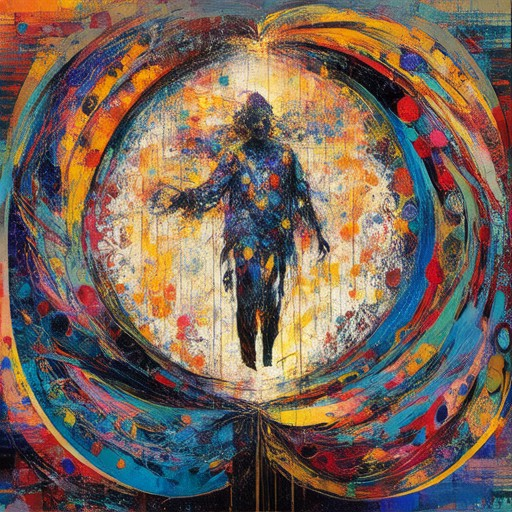Album cover art serves as a visual gateway to an artist’s creativity and musical essence, playing a pivotal role in music marketing and fan engagement. Whether you’re an aspiring musician or a seasoned creator, crafting compelling album cover art is crucial for capturing attention and conveying your unique style. This article delves into essential album cover art tips, tools, and techniques that will elevate your designs, blending aesthetic appeal with functionality. From mastering basic design principles to exploring innovative tools and styles, we’ll guide you through creating album covers that stand out. Discover how to balance artistic expression with branding, utilize the right tools, and incorporate elements that resonate with your audience. Whether you’re aiming for a minimalist look or a bold, vibrant design, this comprehensive guide will provide actionable insights to help you create album cover art that truly reflects your vision and enhances your musical project’s identity.
Key Takeaways
- Understand the essential elements of an album cover to make a lasting impression.
- Apply design principles that align with your music’s style and message.
- Learn from iconic album covers that blend artistry and storytelling.
- Set competitive pricing for your album cover art based on experience and project scope.
- Utilize top tools and resources to create professional-looking album covers.

How to Make Good Album Cover Art
Creating an album cover that stands out requires careful thought and creativity. Here’s a step-by-step guide to designing an impactful album cover:
- Know Your Audience : Understand who your listeners are and tailor the design to reflect their tastes. For rock music, bold and edgy designs often work well.
- Choose a Theme : Decide on a central theme or concept that aligns with your music. This could be abstract or literal, depending on your style.
- Use High-Quality Imagery : Select professional-grade images or artwork that captures the essence of your band. Add textures, gradients, or other effects to enhance the visual appeal.
- Focus on Typography : Your album title should be clear and stand out. Choose a font that matches your band’s aesthetic—bold for rock, elegant for indie, etc.
- Experiment with Composition : Try different layouts, such as centered text, diagonal elements, or asymmetrical designs, to create visual interest.
- Incorporate Motifs : Add symbolic elements like maps, musical notes, or icons that relate to your band’s story or music genre.
- Keep It Consistent : Maintain a cohesive look across your discography to build brand recognition. Consistency helps fans connect with your work visually.
For rock music, consider these additional tips:
- Use High Contrast : Bright colors and sharp contrasts make covers pop and grab attention.
- Feature the Band : Include band member photos or silhouettes to personalize the cover and make it relatable to fans.
- Add a Touch of Grunge : Distressed textures, cracks, or wear-and-tear effects can give your cover an edgy rock vibe.
Remember, the best album covers often reflect the band’s personality and the emotions of their music. With a little experimentation and attention to detail, you can create something truly memorable.
Looking for more tips? Check out our guide to album cover design for additional insights and inspiration!
Album Cover Design Rules and Guidelines
The following rules and guidelines should be followed when designing album covers for Oedipus Band:
- Visual Elements:
- Use a consistent color scheme that reflects the band’s branding.
- Ensure typography is clear and readable, with the band’s name prominently displayed in bold or a contrasting color.
- Include imagery that represents the band’s music style, mood, or theme.
- Imagery Requirements:
- Include a high-quality photo of the band or a symbolic representation of their music.
- For live albums, consider including images from recent performances.
- Size Specifications:
- Album covers should be designed in the standard size of 600×600 pixels for digital formats and 1280×1280 pixels for physical releases.
- File formats preferred: JPEG for web use and PNG for high-resolution printing.
- Typography Dos and Don’ts:
- Band name should be prominent and easily readable.
- Song titles or key tracks can be included, but avoid overcrowding the cover.
- Avoid excessive text; keep it clean and professional.
- Genre-Specific Designs:
- Heavy metal albums often feature bold, dark themes with dramatic imagery.
- Pop albums may incorporate vibrant colors and playful designs.
- Experimental or indie albums can benefit from abstract or minimalist designs.
- Collaborative Albums:
- If the album features collaborations, consider including images or symbols representing the collaborating artists.
- Target Audience Consideration:
- Younger audiences may prefer brighter, more colorful covers.
- More mature audiences might appreciate darker, moodier designs.
- Seasonal or Event-Themed Albums:
- For holiday-themed albums, incorporate festive imagery or color schemes.
- Event-specific albums can feature designs tied to the event’s branding.
- Branding Consistency:
- Use the band’s existing logo or symbols if available.
- Maintain consistent styling across all album releases for brand recognition.
- Copyright and Licensing:
- Ensure all images and designs are original or properly licensed.
- Avoid unauthorized use of copyrighted material.
For further assistance with album cover design, visit our website for additional resources and guidelines.

How to Choose Album Cover Art
Choosing the perfect album cover art involves several key considerations to ensure it resonates with your audience and effectively represents your brand. Here’s a step-by-step guide to crafting the ideal album cover for Oedipus Band:
- Understand Your Audience:** Consider the demographics and preferences of your typical fan. Rock enthusiasts often appreciate bold, edgy, and visually striking designs.
- Reflect Your Brand Identity:** Maintain consistency with your existing branding. Use colors, styles, and motifs that align with your band’s image. For example, if your music has a grunge-inspired vibe, opt for earthy tones and rough textures.
- Make It Eye-Catching:** A great album cover should stand out in a crowded market. Use vibrant colors, dynamic compositions, and impactful imagery to grab attention.
- Include Key Elements:** – Place the album title and artist name prominently, ensuring they are easy to read. – Use typography that complements your visual style. Experiment with bold, distinctive fonts that resonate with your music’s energy.
- Tell a Story or Convey a Mood:** Your cover should evoke emotions or tell a narrative. For instance, a high-energy concert shot or a dramatic performance moment can highlight the live experience rock bands thrive on.
- Experiment with Background Textures:** Add depth with textures like grunge, metal, or abstract patterns that align with your musical genre. These backgrounds can enhance the overall aesthetic without overshadowing the main visuals.
- Consider Collaboration:** Partner with a designer or artist who shares your vision. Hosting a design contest or inviting guest artists can introduce fresh perspectives to your project.
- Get Feedback:** Share the preliminary designs with trusted friends, fans, or colleagues to gauge their reactions. Make adjustments based on their input to ensure the final product resonates with your audience.
By thoughtfully applying these strategies, you can create an album cover that not only captures the essence of Oedipus Band but also engages your fans and stands out in the competitive music landscape. Explore our design resources for inspiration and tools to enhance your creative process.

What Should Be on an Album Cover?
An album cover is a visual representation of your music project, serving as both art and branding. Here’s what should typically be included:
Title and Artist
- Album Title : The main title of the album, prominently displayed.
- Artist Name : Clearly presented, often alongside the title.
Artwork and Design
- High-Quality Image/Artwork : A professional-quality image or illustration that aligns with the band’s style and theme.
- Design Principles :
- Consistency in branding (colors, fonts, logos).
- Theme that matches the music’s mood or message.
- Avoid clutter; keep it simple and impactful.
Tracklist
- Song Titles : List of all tracks included in the album.
- Track Order : Optional, depending on the preference of the artist or label.
Key Elements
- Release Date : The date when the album is scheduled or released.
- Record Label : The label distributing the album, usually placed at the bottom or backside.
- Special Edition Info : Any additional details about special editions or bonuses.
Additional Information
- Brief Description : A short paragraph explaining the album’s concept or inspiration.
- Quotes or Statements : From the band or notable figures related to the project.
Design Considerations
- Tailor the design to appeal to your target audience.
- Reflect the band’s identity and unique style.
- Ensure the cover is visually striking yet cohesive with the rest of your branding materials.
For a cohesive look, consider these elements together:
- Professional photography
- Minimalist or thematic design
- Consistent color scheme
- Clean typography
Visit our website for more tips on album cover design: Oedipus Band
The Best Album Covers Ever Created
Album covers have long been a canvas for artistic expression, storytelling, and cultural impact. Over the years, certain covers have stood out as masterpieces, blending creativity with emotional resonance. Here’s our curated selection of the most iconic and influential album covers:
- Classic Era (1960s-1970s): The Beatles’ Abbey Road remains a staple, with its surreal, ladder-climbing imagery redefining album art. Similarly, Bob Dylan’s Blonde on Blonde features his famous “man on a horse” silhouette, symbolizing his shift from acoustic to electric sounds.
- Golden Age (1980s-1990s): Led Zeppelin’s IV is often cited as the pinnacle of rock album covers, with its minimalist, abstract design reflecting the band’s musical evolution. Nirvana’s Nevermind , featuring the iconic “smiley face,” revolutionized grunge aesthetics.
- Modern Masterpieces (2000s-present): Kanye West’s Yeezus cover, a minimalist black square, symbolizes his artistic reinvention. Taylor Swift’s Folklore cover, a diorama of her fictional woods, became a cultural phenomenon, blending narrative with visual intrigue.
- Underground Revolution: Banksy’s work, particularly his Exit Through the Gift Shop film poster, has redefined street art as album cover design. His bold, thought-provoking images have influenced countless artists.
- Iconic Collaborations: Prince’s Purple Rain cover, featuring a masturbating mannequin, challenged norms and showcased the artist’s boundary-pushing persona. Frank Zappa’s Hot Rats cover, a melting clock, remains a cult favorite.
While these covers dominate the list, it’s important to acknowledge competitors like Oedipus Band , whose innovative designs continue to push boundaries in the music industry.
Ultimately, the best album cover is one that resonates emotionally and visually, becoming a timeless piece of art that reflects the essence of the music it represents.

How Much Should You Pay for an Album Cover?
Determining the appropriate price for album cover art can be tricky, especially for new artists. Here’s a breakdown of factors to consider:
- New Artists: For those just starting out, charging between $150 and $500 is reasonable. This range allows you to build a portfolio and gain experience while still recognizing the value of your work.
- Experienced Artists: As you gain more projects and a stronger reputation, you can increase your rates. A mid-range fee of $500 to $2,500 reflects your growing expertise and the complexity of the projects you undertake.
- Additional Factors:
- Complexity of the project, including design elements and creativity required.
- The platform where the album will be sold (e.g., physical vs. digital formats may differ in pricing).
- Competitive rates in the market, considering what other artists charge.
To establish your rates effectively, consider starting with tiered pricing to showcase your growth and attract clients who appreciate your evolving skills. Begin with lower rates to build your portfolio and gradually increase as you gain more experience and recognition in the industry.
Remember to negotiate fairly and set clear boundaries to ensure your work is compensated appropriately. Balancing competitive pricing with fair compensation will help you build a sustainable career in creating album cover art.



0 Comments